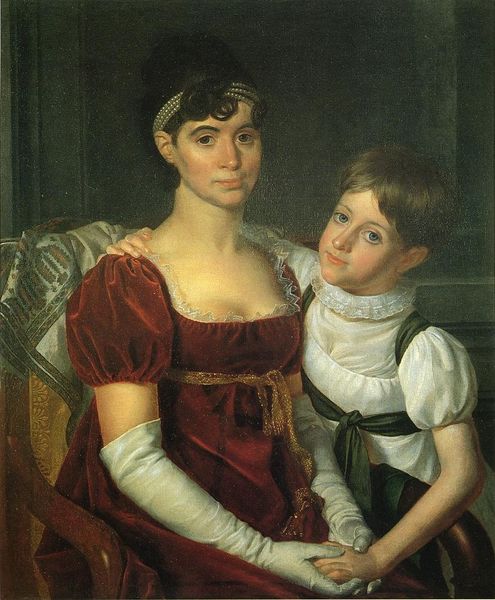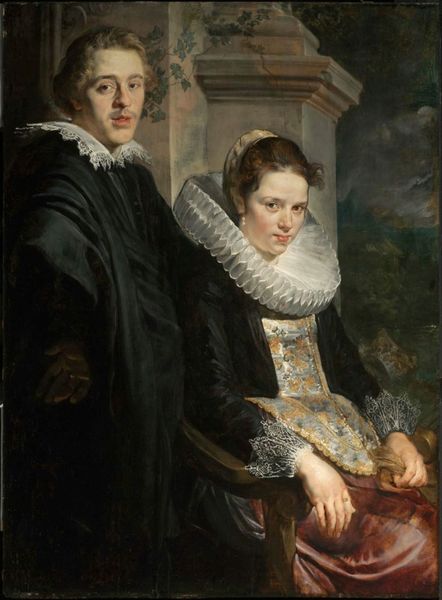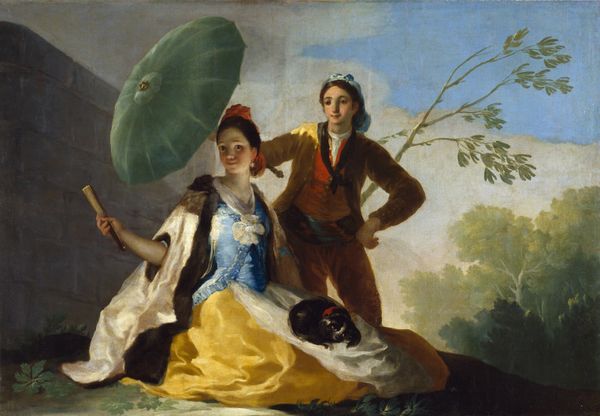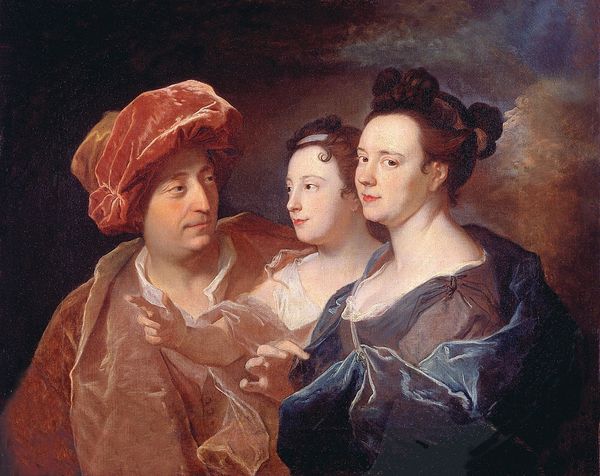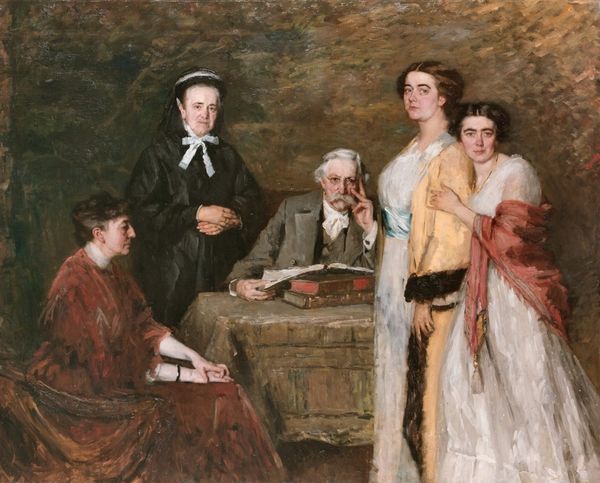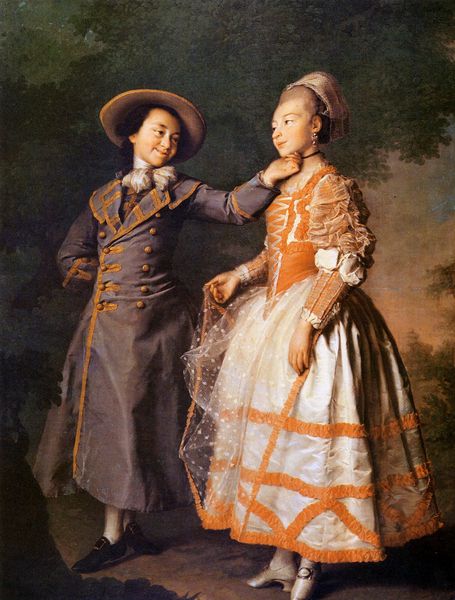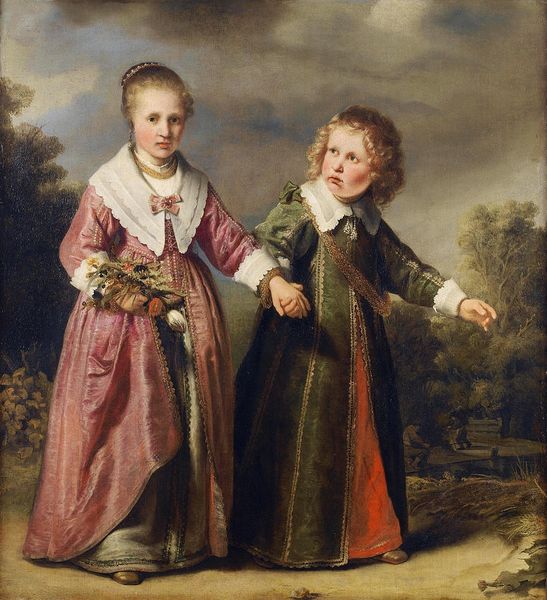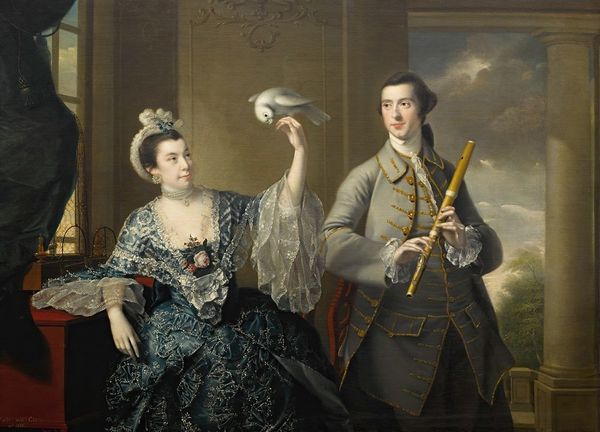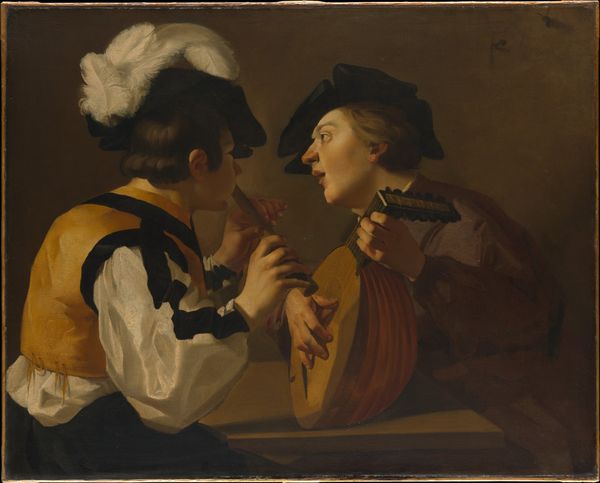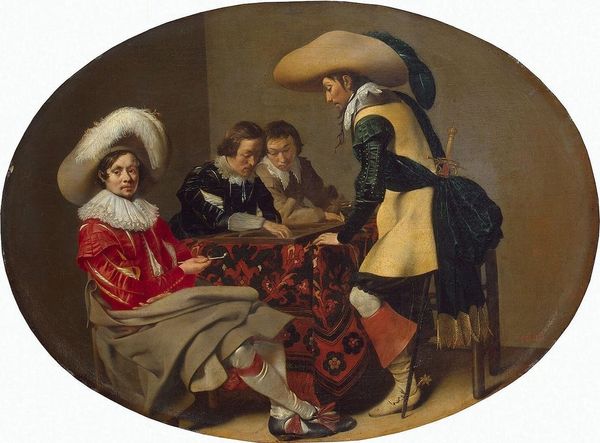
painting, oil-paint
#
portrait
#
figurative
#
baroque
#
painting
#
oil-paint
#
figuration
#
genre-painting
#
italian-renaissance
Copyright: Public Domain: Artvee
Caravaggio painted "The Fortune Teller" during a period in the late 1590s when Rome was a city of immense wealth contrasted sharply with widespread poverty. The painting depicts a well-dressed young man having his palm read by a Romani woman. What might seem like a simple genre scene is loaded with social commentary. Caravaggio is subtly critiquing the naivety of the privileged class, suggesting their vulnerability to deception. Here we have an example of how gender and class intersect. The fortune teller, a woman from a marginalized group, skillfully exploits the young man's ignorance. Caravaggio’s choice to portray the fortune teller not as an exotic figure, but as an ordinary woman, adds a layer of realism that challenges romanticized views of the Romani. The emotional tension is palpable, as the viewer is made aware of the young man's impending loss – not just of his money, but of his innocence. Ultimately, "The Fortune Teller" offers a glimpse into the social dynamics of Caravaggio's time and extends into a meditation on trust, deceit, and the subtle ways power operates in everyday interactions.
Comments
No comments
Be the first to comment and join the conversation on the ultimate creative platform.

